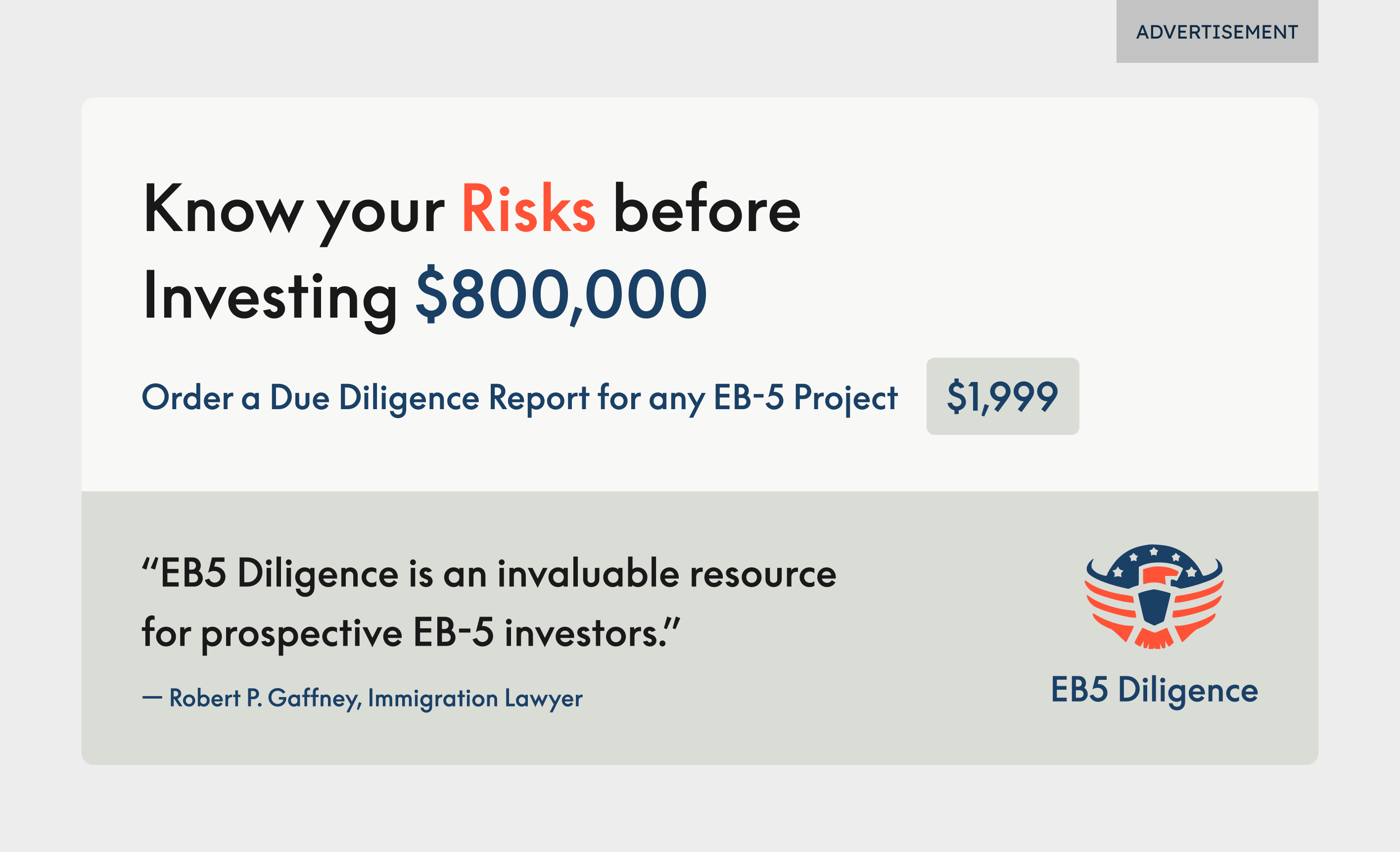As a Business and Family immigration attorney who has been practicing in the U.S. for 40 years, and working in EB-5 for 31 years, fortunately, I have significant experience in advising foreign national investors on how to live and work in the U.S.
An E-2 visa can be an expedient way to enter the U.S. and serve as a “bridge” for families who wish to become permanent residents via EB-5.
The following offers requirements, considerations, and best practices for investors in 2024 who wish to enter and live and work in the U.S. — and possibly make it their lifelong home.
What is an E-2 investor visa?
An E-2 investor visa is a non-immigrant visa (visa for foreign nationals wishing to enter the U.S. on a temporary basis) that allows foreign entrepreneurs to live and work in the United States based on a substantial investment in a U.S. business. This visa is only available for citizens of E-2 treaty countries.
E-2 investors may bring dependents into the U.S. with them: spouse and unmarried children under 21 years of age. The E-2 dependents do not have to be citizens of the E-2 country.
Benefits of E-2: a faster way to get into the U.S.
The E-2 visa is a quick way of securing entry into the U.S. If you're an investor, you can hire other people to manage the business. It could be a way of physically being in the U.S., operating your own business for a temporary fixed period of time.
The visa is valid from three months to five years, depending on the investor’s country of origin, with unlimited extensions (based upon current regulations).
It allows the petitioner and spouse to live and work anywhere in the U.S., allows children to access U.S. public education in the U.S. and can allow for tuition savings at many universities.
While an E-2 visa itself does not directly lead to permanent residency and a Green Card, it offers foreign nationals the opportunity to transition to permanent residency by qualifying for immigrant visas, such as the EB-5 visa process.
Why EB-5 is a good route for E-2 investors
A nonimmigrant E-2 visa offers many benefits but they are still limited compared with U.S. permanent residency. Perhaps an E-2 investor no longer wants to run or oversee an E-2 business because of the overhead and financial responsibility. EB-5 allows foreign nationals to be independent once they obtain U.S. unconditional permanent residency.
Or, perhaps the investor’s children are approaching 21 years of age and wish to continue to live in, work or study in the U.S., or even get married. Therefore, these children can be protected by the EB-5 option. Children 21 or older no longer qualify as E-2 dependents and either have to leave the country or obtain a different visa.
While EB-5 is not the only option for E-2 investors who wish to pursue permanent residency for themselves and their dependents (this can be achieved with any family-based or employment-based petition), filing an EB-5 petition once they are in the U.S. is an attractive first-step option.
Even though an EB-5 petition may take years to be processed, the new rules for EB-5 allow EB-5 petitioners to concurrently file for adjustment of status via an I-485 application. An adjustment of status offers many benefits of a Green Card. When an investor files to adjust status, they can also apply for work authorization and travel authorization — which will only take several months to be processed.
And when children under 21 years of age file their I-485, this “freezes” their age, to help ensure they can remain in the U.S. even if it takes years for the EB-5 petition to be adjudicated.
Another benefit of transitioning from E-2 to EB-5 is that the E-2 investment amount may qualify towards the EB-5 investment amount requirement in the same business.

E-2 requirements
Nationality: The investor must be a citizen of a U.S. treaty country. Click here to see the U.S. Department of State list of treaty countries.
Investment: The investment capital must be a “substantial” amount and invested in a new or existing active and operating for-profit business in the U.S. There is no minimum investment amount but the U.S. regulations want to see an investment amount that is sufficient to start and operate the business.
In terms of a minimum investment amount, based on experience, an initial investment of USD $100,000 has been accepted by USCIS and/or the U.S. Consulate.
Ownership and control: The investor (individual or corporations) must have at least 50% ownership of the U.S. E-2 Corporation.
Source of funds: An investor must provide evidence/authentication of the lawful source of the funds used for the investment.
Business plan: A comprehensive business plan must outline the nature and objectives of the enterprise, as well as the investor’s role in its operation and management.
Marginality of the enterprise: The business should not be established solely to provide a living for the investor and his or her family. It should have the potential to generate significant revenue and contribute to the U.S. economy by providing employment in the U.S. E-2 business.
Intent to depart: As the E-2 visa is a non-immigrant visa, the applicant must demonstrate an intention to depart the U.S. when the E-2 status expires. This can be shown through ties to the applicant's home country, such as property ownership, family, or business interests and signing a statement stating intent to return to the home country.
It’s interesting to note that the E-2 process is not a static set of rules but changes over time. For example, 40 years ago when I first started working in immigration law, it was enough to show that the E-2 investor merely transferred their funds to the corporation in the U.S. and the funds could just be deposited. There was no mandate to show the funds were irrevocably committed and spent at the time of the E-2 filing, as there is today.
New vs. existing businesses
E-2 investors can choose to create a new business or invest in an existing one. I’ve seen an even split of investors choosing either direction.
When an investor invests in an existing business, it’s usually an asset purchase — the investor is buying the business but not its liabilities. Corporate lawyers and U.S. CPAs will be involved.
The investor should enter a contract conditioned on the funds being released to the seller upon two conditions: i.e. granting of the E-2 visa and E-2 visa entry into the U.S.
The investment funds are usually held in an escrow account until the fulfilment of these conditions according to an irrevocable escrow account and an irrevocable contract to purchase the business (release of funds to the seller) upon the approval of the E-2 visa and E-2 entry into the U.S.
The most common U.S. business is a limited liability company (LLC); this is a business structure that protects its owners from personal responsibility for its debts or liabilities. Tax accountants (U.S. CPAs) can offer guidance on the implications.
Is E-2 dependent on job creation?
Yes, E-2 is tied to job creation — but, no, there is no specific number of jobs, as with EB-5 (where each investor must create 10 full-time jobs), that must be created to qualify.
A successful E-2 applicant must demonstrate that there is the potential for hiring U.S. workers who are either citizens or permanent residents. Employment can include full-time, part-time or independent contractors, or foreign nationals with employment authorization cards.
While there is no specific job-number quota, if there is no chance of having employees either full-time, part-time, or even independent contractors, then USCIS will classify this as a marginal investment and it will be a ground for denial of the E-2 Visa.
As an example, for an E-2 Executive Employee, an E-2 Business Plan may show one Executive Vice President, a couple of managers and several other employees, some full time, some part-time. The executive employee is required to be a national of the E-2 Treaty country but does not have to be an investor in the E-2 Business. The E-2 investor spouse can apply for employment authorization and be employed anywhere including the E-2 Business.
In contrast, an E-2 principal investor can show that, in general terms, he will oversee the U.S. business operations and U.S. workers.
Does the E-2 investment need to be sustained?
An EB-5 investment needs to be sustained at risk for at least two-plus years if not more. Is there any sustainment period for an E-2 investment?
No, there is not. Once you invest in E-2 and the money is purchasing the business, that’s it — an investor has fulfilled the requirement to invest irrevocably.
The U.S. Consulate that reviews and approves the E-2 application doesn’t have to see any proof of successful operations for the business. The Consulate just needs to see at the time of filing that an irrevocable commitment in a contract that the money will be released upon E-2 visa approval and entry to the U.S.
E-2 investors often will need more funds to maintain the business and this can come through revenue or future investments.
Please note, when the E-2 investor exits the business, the investor’s E-2 visa will no longer be valid for the investor and dependent family members.
E-2 source of funds
The lawful source of investment funds is a requirement for an E-2 visa. An application doesn’t have to go into the same level of detail as for an EB-5 application (where lawful source of funds documentation can be several thousand pages and exhibits), but it is still vital for E-2 approval.
The reason for the differing level of detail compared with EB-5 is that E-2 has a different history and a smaller investment amount requirement.
A best practice is to refer to and show the source of funds through illustrations and diagrams, in addition to written descriptions. This paints a clear picture immediately for an adjudicator, instead of requiring the adjudicator to read and understand pages of verbiage.
Passive vs. active management and investor-employment restrictions
Investors interested in E-2 may be entrepreneurs who want to run their own business. But active management is not a requirement and an investor can choose to take a more passive role with their investment by simply overseeing the operation.
As an example, an E-2 investor could buy a restaurant that already is operating and has staff. The investor oversees the business as president and other managers and staff play an active role.
It should be noted that the principal investor is restricted to employment associated with the investment and cannot be employed elsewhere. However, the spouse can get an employment card and work anywhere, either in the E-2 business or another U.S. business.
Employing family in the E-2 business
If a principal investor desires to make the spouse an executive or manager, the spouse must file a separate E-2 visa Application for E-2 visa employment authorization.
But if applicants don’t want to go through the E-2 organizational structure, the spouse can on his or her own apply for an employment card and then work in the E-2 business or another U.S. business.
A child may apply for a separate E-2 employment visa for an Executive/managerial position. However, children cannot apply to work in the family business without an employment card. Children, if they're going to school under an F-1 visa, after the first academic year, can apply for an employment card and then work in the family business for an average of 20 hours per week.
Reciprocity fees
E-2 applicants from certain countries must pay a visa-issuance fee after their E-2 application is approved. This fee is separate from the investment amount. The United States aims to not charge visa issuance fees where possible, but, if a treaty country imposes fees on U.S. citizens for certain types of visas, the U.S. then requires a “reciprocal” fee for a similar visa for foreign nationals of that country.
For example, an Australian E-2 applicant must pay a substantial reciprocity fee of $3,464.00, based on what the Australian government charges U.S. citizens for a similar visa. Conversely, an Austrian E-2 applicant pays no reciprocity fee based on the reciprocity of Austria.
Intent matters: non-immigrants can only pursue permanent residency after entering the U.S.
As a non-immigrant visa, one of the E-2 requirements is an intent to depart, and this may seem counter-intuitive when discussing how an E-2 visa can lead to permanent residency in the U.S.
But subsequent to one’s entry on an E-2 into the U.S., there are laws that allow someone with a non-immigrant visa status to adjust status and pursue permanent residency through an I-485 Application to Register Permanent Residence or Adjust Status while in the U.S.
While the law allows for this, the policy does not accommodate foreign nationals who arrive as non-immigrants and who want to immediately apply for residency. To do so would be considered a contradiction of one’s E-2 non-immigrant initial visa entry and intent to depart — and also may be considered fraudulent entry.
Please note, one may still arrive on an E-2 visa with an intent to depart and still have previously filed an immigrant EB-5 petition — the EB-5 petition is not an application for residency, per se, but a foundation for a subsequent ability to apply for permanent residency.
As such, entering the U.S. on an E-2 visa while having already filed an EB-5 petition is not considered a contradiction of entry as a non-immigrant. An inspector could ask about the EB-5 petition that is filed and wonder if that’s proof of the non-immigrant wanting to become a permanent resident. The E-2 applicant could explain that if they do apply for permanent residency status, it will only be accomplished at a U.S. consulate in their home country, and not pursued in the U.S. This is acceptable.
Furthermore, while an E-2 visa applicant must on entry show the true intent to leave the U.S. and if asked by U.S. inspectors, explain that they will pursue U.S. permanent residency in their homeland. Then after E-2 arrival, an estimated 90 days passes, and the Applicant may decide to file an application for adjustment.
The time period after arrival when it is acceptable to change intent used to be 90 days, but USCIS has removed that specific requirement or parameter and now will review that a reasonable amount of time has passed before the E-2 national is changing intent, i.e., from E-2 to adjustment of status.
How long is an E-2 visa good for?
An E-2 visa is good for five years. Additionally, the E-2 visa holder is allowed two years of status for each visit to the U.S. and can apply for E-2 status extensions without leaving the U.S. and keep doing this for the duration of their five-year visa. The visa can be extended indefinitely based on current E-2 visa regulations and policies.
While the E-2 visa holder could apply for extension of status if they do not wish to leave the U.S. after two years, most investors, because they are involved in international business, may need to leave the U.S. briefly — and then return after a week or so of being away as long as they have a valid E-2 visa.
E-2 processing times
For foreign nationals living outside of the U.S. hoping to gain entry into the U.S., an E-2 visa is a faster route than simply filing an EB-5 petition and waiting possibly years for the processing of that EB-5 petition, before they can apply for a permanent residency visa.
The time to get an appointment at a U.S. consulate in a foreign country to review an E-2 application depends on the consulate but is usually two to four months for a scheduled interview. The U.S. consulate may issue the E-2 visa within an estimated 1 to 10 days, after the personal interview.
And, unlike EB-5, E-2 does not have any backlogs for certain countries. That said, at the time of this writing, there is no E-2 visa processing in Columbia and Columbians will have to look for a consulate in another country that takes third-country nationals for E-2 processing. The reason for this particular situation is likely bureaucratic delays or a lack of staff.
Does the list of treaty countries change over time?
Yes, it does. The list of E-2 treaty countries, for example, added New Zealand and Israel. And before then, in the 1990’s I was part of the effort to add Australia to the E-2/E-1 program country list. My group met with politicians in D.C. and Australia’s capital city, Canberra, and then negotiated with the U.S. Congress. We also, a few years later, were able to successfully lobby for the E-3 professional work visas for Australians.
But it should be noted that this process is a long journey and certain countries that are not part of the treaty list may face a difficult battle if they try to become part of the treaty-country list.
2nd citizenship as a bridge for E-2
For nationals of countries that are not part of the treaty list, there are still routes to obtaining an E-2 visa. In the past few years, Chinese, Brazilian, or Russian citizens would go to a treaty country, and either through a gift or an investment, obtain citizenship of that treaty country in just a few months. The most popular treaty countries chosen for this second citizenship were Granada and Turkey.
Second citizenship is usually obtained by making an investment in that new country (remember, this investment in a new country like Granada is a separate investment from the E-2 investment an applicant makes in the U.S.).
But the U.S. recently made this route more challenging.
Congress makes 2nd citizenship harder: 3-year residency first required
As of Dec. 23, 2022, Congress changed the eligibility criteria for E visas in the Immigration and Nationality Act (INA).
The new legislation says that if someone obtains a treaty-country second citizenship “though a financial investment,” in order for that person to apply for an E-2 visa, that person must first reside in that treaty country for three years.
No notice of this change was provided to the E-2 legal community, as we immigration lawyers do not agree with this new requirement but it is law now. However, as immigration lawyers, we feel there are two viable alternatives to avoid residing in the new country for three years before applying for an E-2 visa.
2nd citizenship workaround #1: spouse becomes E-2 investor
Immigration lawyers have explored potential workarounds so new investors with citizenship in a second country can take advantage of the E-2 visa process without being resident in a treaty country for three years.
The first potential solution is that the new law of three years residency in a treaty country applies to the person who made a second-citizenship investment — but this requirement may not apply to the spouse of that person. In such a case, the spouse of the person who made the treaty-country investment could be the E-2 investor.
This workaround has not been tested yet. However, many immigration lawyers believe if we can have U.S. consulates grant the E-2 visa to the spouse of the person who invested in the treaty country, then this should be a viable route.
The E-2 investor (because of the uncertainty of the workaround) may definitely choose to condition the commitment of investment funds on the granting of the E-2 visa.
2nd citizenship workaround #2: gifting the 2nd country
Another potential workaround for the three-year residency requirement in a treaty country is by gifting the amount to that treaty country instead of making an investment. Immigration lawyers feel confident that the new law only refers to “investors” in a treaty country and that this solution may be viable.
Obtaining second citizenship by gifting works in countries like Grenada. The amount can vary by country e.g., the gift amount is often around $200,000. This workaround may be chosen by very wealthy individuals who have an immediate and substantial need to enter the U.S. under the E-2 visa.
Using the E-2 investment as part of the EB-5 investment
One potential benefit of using E-2 as a bridge to permanent residency through EB-5 is that the E-2 investment amount may qualify as a portion of the $800,000 minimum EB-5 investment amount.
An E-2 investor can expand the first investment businesses, invest more money to reach the EB-5 threshold, and also meet other EB-5 qualifications, e.g., the creation of 10 full-time jobs. So if, for example, $150,000 was invested in the E-2 businesses, expanding it into an EB-5 investment would only require an additional $650,000.
However, for this process to work, first, the E-2 investment must be made into a direct or standalone business and not a regional center investment — unless the investor’s E-2 business affiliates with a company that has a regional center license approved by USCIS.
Location doesn’t matter for E-2 — but it does for EB-5
E-2 investments don’t have any requirements to be in a certain location. But if an investor intends to count the E-2 investment amount towards the EB-5 investment, location must be considered. The EB-5 minimum amount only applies to investments in qualifying rural or high-unemployment areas — or in infrastructure investment projects, otherwise, the investment requirement will be $1,050,000.
What if an E-2 business doesn’t hire 10 operational employees, can it still qualify for EB-5?
That is, what if the E-2 business that you want to convert into an EB-5 business doesn’t need 10 operational or “direct” employees and therefore cannot satisfy the EB-5 direct job-creation requirements?
There is a solution.
The owner of the business can approach an existing EB-5 regional center company and affiliate with that regional center company. By doing so, this allows the E-2 to EB-5 business to count not only direct jobs but indirect (supplier industry) and induced (jobs created in the local economy because of spending or construction jobs) to qualify towards the EB-5 10-job quota. Thus, a business with only four or five operational employees may still meet the EB-5 requirement with regional center affiliation.
Note that counting direct and induced jobs requires an EB-5 experienced economist or business plan writer to come up with the economic models and calculation forms necessary to prove such job creation.
It is also worth considering that to make an EB-5 investment, an investor does not have to come up with the full $800,00 all at once; the EB-5 investor can start with a partial payment and qualify by being in the “process of investing.” In practical terms, this means an investor could, for example, invest $300,000 at the time of the filing of their EB-5 petition and then liquidate assets over the next several months to a year to come up with the remaining $500,000 which will be invested into the EB-5 business project.
Profits from E-2 business don’t count as EB-5 investment capital
E-2 investors must remember that if they intend to use their E-2 investment as part of their EB-5 investment capital, only the money invested into the E-2 business may qualify.
Profits or retained earnings in and of themselves from the E-2 business do not count towards the $800,000 EB-5 investment amount.
If the profits or retained earnings were distributed as dividends to the E-2 investor and were invested back into the E-2 business, then they may qualify towards the EB-5 investment amount.
Alternatively, the E-2 profits distributed may be used as a source of funds for the investor for a new EB-5 regional center investment.
When can someone close down the E-2 business?
If an E-2 investor wants to close his E-2 business and make an EB-5 regional center investment, at what point does he or she pull their money out of the E-2 investment?
If that investor makes an EB-5 investment, files the I-526E petition, and concurrently files the I-485 application to adjust status, they can then apply for employment authorization and permission to travel — which usually takes about seven months for approval.
Once the investor receives employment authorization and permission to travel, that investor can choose to shut down their E-2 business and be free to work anywhere in the U.S. and travel in and out of the country.
Remember, that if the investor has shut down the E-2 business, he or she will be landlocked in the U.S. until the travel permit arrives. If being landlocked for seven months is not an option and the investor must go in and out of the country during that time, they should keep the E-2 business running as long as they need to work or travel, and until they receive their travel permit based upon their I-485 Application for conditional permanent residency.
E-2 and EB-5 strategies are important and need to be discussed with experienced professionals including a U.S. immigration attorney, business plan writer/economist, U.S. corporate attorney and U.S. CPA (Certified Public Accountant).
Please note that every business and investment decision has immigration consequences while every immigration decision has a business and investment consequence.
A team of experienced professionals is essential for your transition to the U.S. and the preservation of your wealth.




